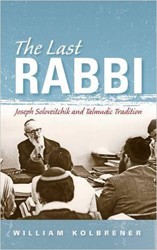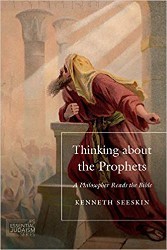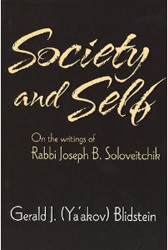Maimonides — Between Philosophy and Halakhah, edited by Professor Lawrence Kaplan of McGill University, has a unique origin. In 1950 – 51, Rabbi Joseph B. Soloveitchik, a leader of Modern Orthodoxy in the twentieth century, offered a series of lectures on Maimonides’ Guide of the Perplexed. While the lectures are not transcribed verbatim, comprehensive notes from a lecture attendee, Rabbi Gerald Homnick, provide the basis for Kaplan’s book. As a widely recognized scholar on the thought of Rabbi Soloveitchik, Professor Kaplan is uniquely qualified to reconstruct these lectures on Maimonides’ most challenging philosophical work.
To these notes Kaplan has provided both a preface and editor’s introduction of just over fifty pages. In a foreword to Kaplan’s introduction, Professor Dov Schwartz recognizes the achievement of this introduction to both impart “an independent perspective to the connection between R. Soloveitchik and Maimonides and aids the reader in understanding Rabbi Soloveitchik’s intentions and insights.”
Following the introduction, Rabbi Soloveitchik’s analysis of the Guide of the Perplexed is divided into ten units that include a discussion of Maimonides’ thinking on prophecy, ethics, creation, and the knowledge, love, and fear of God. Smaller units consider the distinction between Maimonides and Aristotle and Maimonides and Judah Halevi. In explaining his editing process, Kaplan explains that “Rabbi Homnick was not a professional transcriber, and he was not always able to take down the Rav’s lectures word for word … At times the material is quite repetitive and therefore required combining and condensing. At other times, to the contrary, it is very fragmentary, and I found it necessary to fill in the gaps from other essays or published lectures of the Rav.” Kaplan’s edition also includes footnotes to explicate and expand Rabbi Soloveitchik’s words.
As one might expect, Maimonides — Between Philosophy and Halakhah is not an armchair read. Kaplan’s work is best undertaken by those with an above-average understanding of general philosophy, Jewish philosophy, and the writings of Rabbi Soloveitchik. However, any reader committed to working his or her way through Kaplan’s work will recognize the value of Kaplan’s contribution to elucidating the complexity of both Maimonides’ philosophy and Soloveitchik’s interpretation.
Related Content:
- Maimonides Reading List
- David Zulberg: Rambam and Medicine
- Darin Strauss: What We Believe
Jonathan Fass is the Managing Director of Educational Technology and Strategy at The Jewish Education Project of New York.





